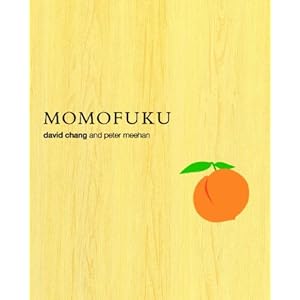Ever since then I've been chipping away at my store-bought kimchi so that I'd have an excuse to make my own. Because fermentation - as the title would lead you to believe - is fun.
I used David Chang's Momofuku cookbook for my kimchi. It's one of the simplest recipes in the book, which I use more often for inspiration, general cooking rules/tips and food stories because many of the recipes, while gorgeous and intriguing, are also complex and designed to produce impractically large quantities.
This recipe helpfully explains why making your own kimchi (or my salt-preserved limes) won't make you sick. In case you are also curious, the key is that lots of salt will kill off all non-helpful (and I assume unfriendly) bacteria except for the lactic acid producing (friendly) ones, which do the actual fermentation.
Basically: Salt is magic.
Whilst picking up Burmese supplies I also picked up a kimchi essential, and easily one of the more gross looking ingredients I've ever used, salted jarred shrimp. They look like little krill, eyes and all, except that whoever was designing the product thought to themselves, "What would make these little white shrimp look better? How about fluorescent pink food colouring!" They were wrong. But as some sort of seafood seems to be standard and these little fellas will keep between recipes, so now I own a jar.
I also had to buy a pound of Korean chili powder because apparently there's not sufficient demand for anything smaller from Ottawatons to stock it in the store.
 |
| Way too much chili powder, just enough nappa, ten year supply disturbing pink shrimp. |
These are the things that you need to make kimchi. Can I just point out how awesome it is to put that much garlic in anything? Note the marvelously julienned carrots. If you don't have a julienne peeler, even if you aren't making kimchi, I recommend it - one of my favourite kitchen toys. Especially when I need it - even more especially when I don't have it.
Above you see my kimchi once everything's assembled. Although Chang says it will be yummy after one day, the real magic will be happening in about two weeks. I made a big jar for Matt and me and a small jar for a friend who is wise in the ways of kimchi so she can tell me how I did, but the good news is that one day in fermentation was already underway. Science!
David Chang's Kimchi
1 small - medium nappa cabbage, discoloured and loose outer leaves discarded
2 Tbsp kosher salt or coarse sea salt
2 Tbsp plus (probably about) 2 Tbsp honey (Chang's recipe: 2 Tbsp + 1/2 cup sugar)
20 garlic cloves, minced
20 slices* of peeled fresh ginger, minced
1/2 cup kochukaru (Korean chile powder)
1/4 cup fish sauce
1/4 cup usukuchi (light soy sauce, but boy is usukuchi ever a better name)
2 tsp jarred salted shrimp
1/2 cup of one inch pieces of scallions, both white and green parts
1/2 cup julienned carrots.
*"20 slices?" Really, Chang? Result: I have no idea what the intended quantity of ginger is and so I put in around the same amount of ginger as garlic.
Cut the cabbage lengthwise in half, then crosswise into one-inch pieces. Toss with salt and 2 Tbsp honey/sugar in a bowl, then let sit overnight in the fridge. (It will shrink a bunch.)
The next day, combine the garlic, ginger, kochukaru, fish sauce, usukuchi (heehee!), shrimp and remaining sugar/honey in a large bowl and stir. If it's thick like a paste add water a little bit at a time (maximum 1/3 cup) until it's a little thicker than a creamy salad dressing. Add the carrots and scallions and stir.
Drain the cabbage well and add it to the mixture, stirring to combine. Cover or jar and refrigerate. It will be good after 24 hours, but after 2 weeks it will start to taste almost carbonated (allegedly) and that's when Chang says it's best. Feel free to try it at both times. You know. For science.




No comments:
Post a Comment